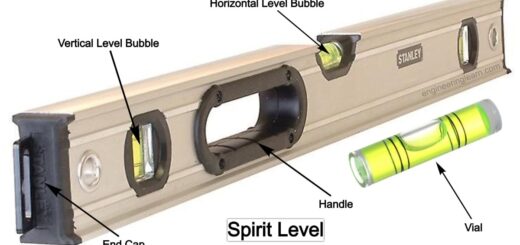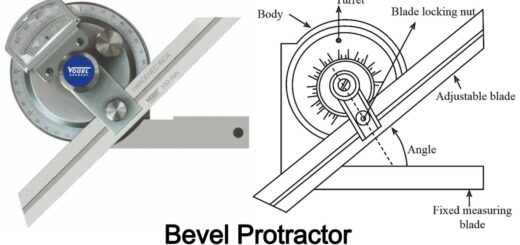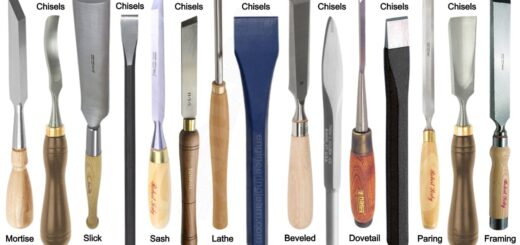Parts of Hammer – Parts of Hammer Head [Explained with Diagram]
![Parts of Hammer - Parts of Hammer Head [Explained with Diagram]](https://engineeringlearn.com/wp-content/uploads/2023/06/Parts-of-Hammer-1024x539.jpg)
Introduction
Parts of Hammer – Parts of Hammer Head [Explained with Diagram]: – Hammers are normally utilized hand tools across different applications. It very well may be utilized for carpentry, demolition, metalworking, home improvement, and other Do-It-Yourself projects. Contingent upon anything that you most need a hammer for, the manufacturer will design the specific parts of a hammer to suit it. A wide range of hammers is accessible, differing in shape, size, and weight. The various styles reflect various uses. (Types of Hammer)
What is a Hammer?
A hammer is a tool that has a weighted head fixed on a long handle. Delivering an impact on a small area of an object hammer is utilized. Hammers are one of the most seasoned hand tools that mankind had started utilizing. These tools could look and perform in different ways, yet every sort of hammer has something important to deal with when in use. Nowadays, we have various sorts of power nailers for each nailing job you can envision.
Although, the primary purpose of a hammer as a hand device is to drive nails, hammers are not just for pounding nails, by the same token. Hammers are utilized for shaping, forging, driving, and taking out nails, and in any event, scraping surfaces. Hammers are unquestionably helpful, yet they can likewise be dangerous whenever utilized in an improper way. Always like to utilize the right size hammer for any job you really want to perform.
Parts of Hammer
Hammers come in many shapes and sizes, and their parts shift as per their purpose. The two primary parts of a hammer are,
- Head
- Handle
The head which is made of the face, neck, cheek, and claw or peen, are some parts of a head that are subdivided into different parts The shape and size of a hammer vary contingent upon the purpose it is designed for.
A. Head: ( Parts of Hammer )
The top or head of a hammer is the part from face to claw or peen barring the handle. The hammerhead covers different parts: the face, neck, cheek, and paw or peen. A sledge with a weighty head will add a lot of weight to the whole instrument. While this can be extremely useful for weighty blows, it isn’t great for fragile or exact undertakings. The two essential components of a sledge are a handle and what sits on top of it. That is the head. This is the whole top of the mallet, and all the other things are essential for the head.
The expected utilization of the mallet will decide the essential plan of the head. Rock and metal sledges seem to be enormous rocks on top of the handle. Wooden mallets have a genuine plan. This part is by and large made of steel, albeit a few producers use titanium. You can likewise find unique reason hammers made of copper, metal, and plastic heads.
Parts of Hammer Head
1. Face
From a genuine perspective, this is the parts of the hammer that contacts the nail or other material being hammered or pounded. Commonly, hammers are meant to drive in nails. In any case, they can likewise be utilized to demolish concrete or other construction material. However, you would by and large use a sledgehammer for this sort of hardcore work.
Hammer’s faces are divided into two types:
- Smooth or flat-faced
- Milled or waffle-faced
The Flat-faced hammer is the one we would by and large experience in many applications. It has a smooth surface and is excellent in many applications, particularly where neat finishing is required.
The milled face or waffle-faced hammer has a crisscrossed waffle design on its surface. This is intended to improve the hammer’s grip on the nail, preventing the nail from falling over while you’re driving it in. The waffle-headed hammer could provide you with somewhat of an edge in the event that you’re trying to do a lot of toe-nailing, or your hammering skills and abilities suck and you really can’t raise a ruckus around town dead on. This isn’t ideal when you require neat completion on a venture.
A couple of premium brands offer interchangeable faces with their hammers. Here, you could switch between waffle and smooth-faced completion as required. It additionally bears the option of you the choice of replacing the face altogether when it gets worn out from use.
2. Shape
The hammer’s face is slightly convex to afford a superior grip or hold on the nail. It’s not convex to the point that it would cause the nail to slip, however, and subsequently, many people don’t see this slight curvature.
The face’s diameter changes relying upon the hammer’s intended use. Tack hammers will generally have the smallest face, while sledgehammers will quite often have the largest. The standard claw hammer firmly possesses the middle or center ground between these extremes.
3. Texture
Like milled-face hammers anyway to some degree are less abrasive or grating, Textured faces let you add a one-of-a-kind and remarkable look to metal and wood surfaces. Some texture choices include crosshatches, wide stripes, and altered dimples. To make significantly more unique patterns, textures can be overlapped.
4. Diameter
Hammers expected or planned for heavy-duty work have a large face. On the other hand, hammers designed for additional delicate tasks will generally have smaller diameter faces.
5. Cheek
As you’d anticipate from the name it suggests, the cheek is the side of the hammer’s head. This part holds on the tool intact and furthermore gets the most stress. Most hammers break at the cheek or in the part of the handle embedded into the cheek. Anyway, The purpose behind the hammer, the head have two cheeks, which are the two even sides of the hammerhead. The shape of the cheek is determined by the reason behind the sledge.
6. Neck
The hammer’s neck attaches or appends the head to the handle, and it shifts between various kinds of hammers. This part is by and large narrower than the face to facilitate legitimate balance across the tool. A decent hammer is even between the face and claw, with these two segments weighing something very similar. A narrow neck works with this weight balance while likewise maximizing the face’s surface area.
7. Eye
The eye and wedge segments are just present in hammers that have separate handles and heads. The eye is the hole in the lower part of the head that slips onto the handle. All the more precisely, hammers that are made with steel don’t have an eye on the grounds that the handle and the head are forged in one piece. While on wooden hammers, you will surely see the eye.
8. Wedge
The wedge is one more part that is not present in one-piece hammers. As the name recommends, this part wedges into the hammer’s eye of the head. It keeps the handle from slipping out of the head.
9. Claw
Claws are either curved or straight, contingent upon the application. Straight claws are additionally called rip claws and are the more aggressive choice. Straight claws can wipe out(eliminate) larger nails from tougher or harder substrates and are fit to heavy-duty work, such as tearing timber. By and large, straight claws aren’t appropriate for finishing work except if the specialist has the right stuff expected to painstakingly deal with it. Most hammers have a curved paw. These can eliminate smaller nails and is more qualified for neat completion work .
10. Straight Claw
Straight claw hammers are by and large a lot heavier than their curved counterparts. Their principal aim is to obliterate materials like plastic and wood.
11. Curved Claw
This is in all probability what sort of claw you know all about. Curved paws have two curved heads that go about as the ideal tool for eliminating or scarping away nails.
12. Peen (Ball Peen & Cross-Peen Hammer)
A few hammers have a peen rather than a claw. A few hammers will feature or highlight a cross peen or a ball peen on the back rather than a claw. Sledgehammers have not one or the other. All things being equal, they have two faces that can be utilized interchangeably. Customarily, the peen was utilized to shape metal during the fabrication process. This isn’t as normal any longer since the shaping of metal has progressed in extraordinary strides and is primarily automated. The peen could likewise be utilized to drive a chisel or punch or for riveting.
B. Handle: ( Parts of Hammer )
The sort of hammer handle you choose relies upon the application within reach and how frequently you use it. Is it true or not that you are searching for a general, all-purpose hammer for the odd Do-It-Yourself project around your home, or do you want a hammer that you will utilize each day, the entire day, for a large project?
Types of Hammer Handle
1. Wood Handle
Wooden handles are the most widely recognized. These offer excellent shock absorption and by and large a good grip, in any event, for sweat-soaked hands. However, they’re not as tough as steel and fiberglass handles. This implies that they will more often than not break with regular use and should be replaced.
2. Fiberglass Handle
Fiberglass handles form the middle or center ground among wooden and steel handles. Note that fiberglass hammer handles really require a grip that mitigates the vibrations caused during use. This is typically a rubber grip, which dampens or hoses the vibrations while offering an eminent grip.
A decent grip on your hammer’s handle permits it to remain safely in your hand until you put it down. It’s probably not going to fly out of your sweat-soaked hand mid-swing, representing a critical risk of injury to yourself and anybody close by.
3. Steel Handle
Steel handle hammers are the most durable and are suggested for heavy wear jobs. These hammers in many cases manufactured as one piece rather than a few pieces joined together. Sadly, steel handles offer no shock absorption. Consequently, the vibrations traveling from the hammer through your hand and up your arm will more often than not be outrageous. Mitigating or Moderating these intense vibrations and the potential wounds they could cause is essential. Consequently, most steel handle hammers have a grip of rubber which is formed around the handle. This offers a safer hold on the hammer and dampens the vibrations.
4. Grip Handle
The Grip is the part that covers the handle and is responsible for the most part for better grip and shock absorption. Wooden handle hammers by and large don’t have a grip or cover. Notwithstanding, while opting for a steel or fiberglass handle, the grip is an essential part of your hammer. Without the additional grip it offers, your hammer could undoubtedly slip from your hand mid-swing. Its shock absorption properties could likewise lighten the strain on your muscles because of the intense vibrations caused while utilizing the hammer.
Concluison
Generally, we utilize whatever is within reach to finish a task, yet on the off chance that there is a suitable tool to make it happen, it is recommended to utilize that all things considered. Since many hammers appear to be identical, it could seem like any of these tools could be utilized for various jobs. Yet, when you find out about how each sort of hammer is made and what it is intended to do, you’ll have the option to pick the right one to make it happen. Assuming you do this right, your tool will last longer and you could try and have the option to work faster.
Quite possibly one of the most widely recognized tools we use for most tasks during our lives is a hammer. Tools permit us to deal with materials, frequently destroy them, later reshape them, and make something better and more beautiful. Understanding what each part of the hammer is and the way in which it fits into each hammer’s specific use will go quite far toward picking the best hammer for you. Hammers come in many shapes and sizes, each constructed to fulfill their own one of unique functions. Along these lines, numerous parts of a hammer differ, and picking the right one can demonstrate troublesome.
Image Source: – bahco













